September in South Korea is the perfect balance of summer's fading heat and the crisp, refreshing breezes of early autumn. As the country transitions into fall, visitors will enjoy milder temperatures, fewer crowds, and the beauty of colorful foliage beginning to emerge.
Whether you're strolling through the tranquil gardens of Changdeokgung Palace, immersing yourself in Korea’s artistic streets in Insadong, or indulging in local culinary delights like jeon and songpyeon during Chuseok, there's plenty to explore and enjoy.
With essential travel advice, packing tips, and exclusive autumn tours, planning an unforgettable fall trip to South Korea becomes a breeze.
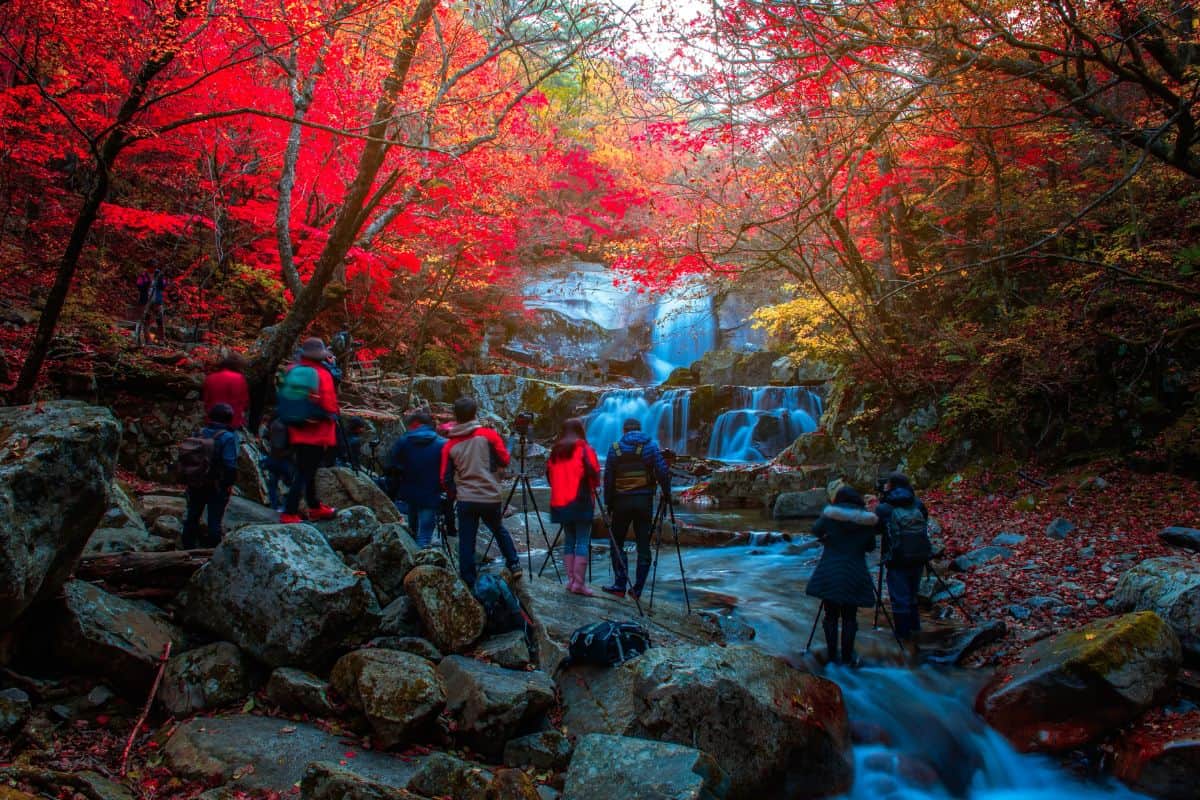
Jump to:
- 🍂 Weather in Korea in September
- 🧍 Crowds and Cost of Korea in September
- 👗 What to Wear in Korea in September
- 📷 Places to Visit in Korea in September
- 🎉 Korea Festivals in September
- ❤️ Korean Public Holidays in September
- 🍐 Korean Foods to Try in September
- 📝 Korea Itinerary for September
- 🎫 Korea Exclusive Tours for Autumn
- ❓ Frequently Asked Questions
- 💬 Comments
🍂 Weather in Korea in September
September in South Korea is a transitional month. Summer's end not-so-gracefully ushers in the vibrant hues of autumn. As the oppressive heat and heavy rains of previous months begin to taper off, travelers can look forward to a more temperate climate.
Early in the month, temperatures can still reach 85°F (30°C), and humidity levels can make outdoor adventures slightly uncomfortable. However, as September progresses, the weather becomes noticeably more pleasant, and autumn's cool breezes begin to bring a refreshing change.
This transformation is most striking in the landscapes, which are beautifully adorned with colorful foliage in shades of orange and red by the end of the month.
Temperature-wise, September still keeps things relatively warm across South Korea, with maximum averages ranging from 69°F (23°C) in Gangneung to 82°F (28°C) in Gwangju. Nighttime temperatures are comfortably cool at around 59°F (17°C), though overall the weather will likely be drier and cooler for travelers planning their trip toward the end of September.
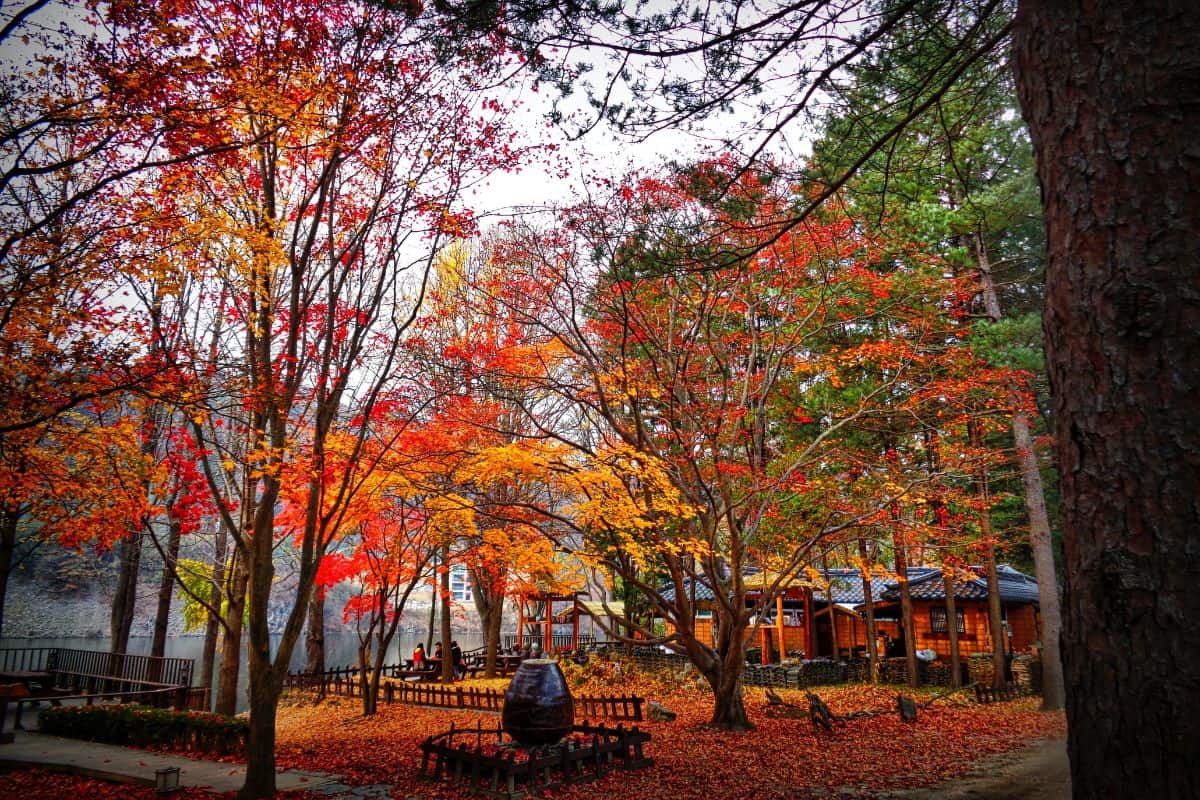
🧍 Crowds and Cost of Korea in September
September in South Korea is calm, as summer winds down and school starts, making it a great time for travelers to explore without the big crowds. The drop in tourists means a relaxed visit to popular spots, and it's a perfect time to enjoy the quiet beauty of the country's landscapes just as autumn colors appear.
Traveling in September also means better deals on flights and places to stay as summer crowds leave. This month offers both a rich cultural experience and a budget-friendly one. Visitors can enjoy local food at night markets in Seoul and explore charming villages at a slower pace, fully experiencing South Korea's beauty and culture.
👗 What to Wear in Korea in September
- Lightweight sweater: As the temperatures range from warm to cool, a lightweight sweater is perfect for layering and keeping you comfortable.
- Jeans or pants: Opt for long pants rather than shorts, as the weather can still be chilly.
- Comfortable walking shoes: With pleasant weather, September is the perfect time to explore on foot. Be sure to pack comfortable walking shoes to enjoy all South Korea offers.
- Light jacket or windbreaker: A light jacket or windbreaker may come in handy as temperatures can drop in the evening.
- Umbrella or raincoat: September is a transitional month, and occasional rainfall may occur. To stay dry, be prepared with an umbrella or raincoat.
- Sunglasses and sunscreen: The sun can still be strong in September, so don't forget to pack sunglasses and sunscreen to protect yourself from harmful UV rays.
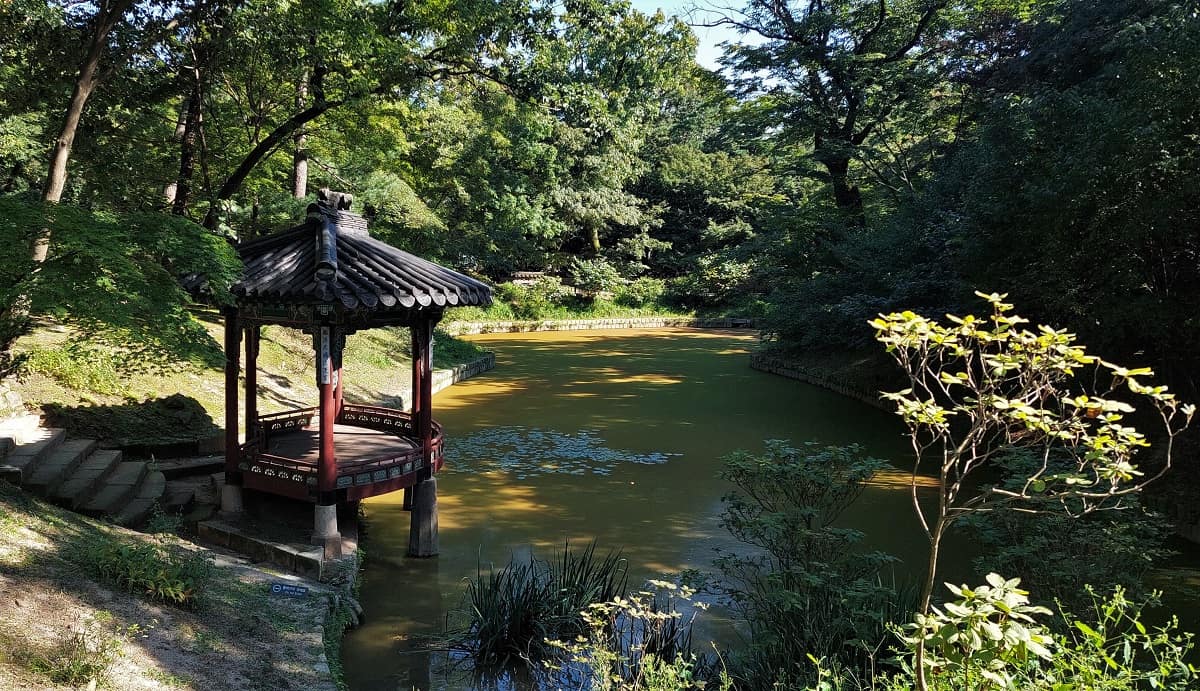
📷 Places to Visit in Korea in September
Songdo Central Park
Songdo Central Park is a standout destination within the ultra-modern city of Songdo. It's a man-made island that blends cutting-edge technology with beautiful architecture. The park itself is South Korea's first seawater park, offering visitors a refreshing retreat in the heart of the futuristic urban landscape.
Water activities are a significant draw here, with visitors enjoying scenic rides on water taxis and the opportunity to canoe in the calm waters. Beyond its water-based activities, Songdo Central Park is also a hub for culture and art, where visitors can explore installations and performances scattered throughout the park.
September is an ideal time to visit Songdo Central Park, as the weather is pleasant and perfect for outdoor activities. The park’s spacious grounds are great for a leisurely walk or a bicycle ride, providing a peaceful escape from the bustling city life.
Tourists will love the contrast of natural beauty and the futuristic skyline, making it a unique place to visit in early autumn in South Korea.
Changdeokgung Palace
Changdeokgung Palace is a historical gem in Seoul, known for being one of the most well-preserved royal palaces of the Joseon dynasty. Built in 1405, it served as the principal palace for many kings and has remained a symbol of Korea’s rich cultural heritage.
The palace is renowned for its harmonious integration with nature, especially the Secret Garden, which was reserved for the relaxation of the royal family. With its 300-year-old trees, ponds, and pavilions, the garden creates an idyllic atmosphere that invites visitors to revisit and experience Korea’s royal past.
Visiting Changdeokgung Palace in September offers tourists the chance to see the gardens begin to transform with autumn foliage. The weather is cooler, making it a comfortable time to stroll through the palace grounds.
The colorful leaves start to fall, making the Secret Garden even more picturesque. This UNESCO World Cultural Heritage site is perfect for history buffs and those who want to appreciate the beauty of Korea’s royal architecture amid nature.
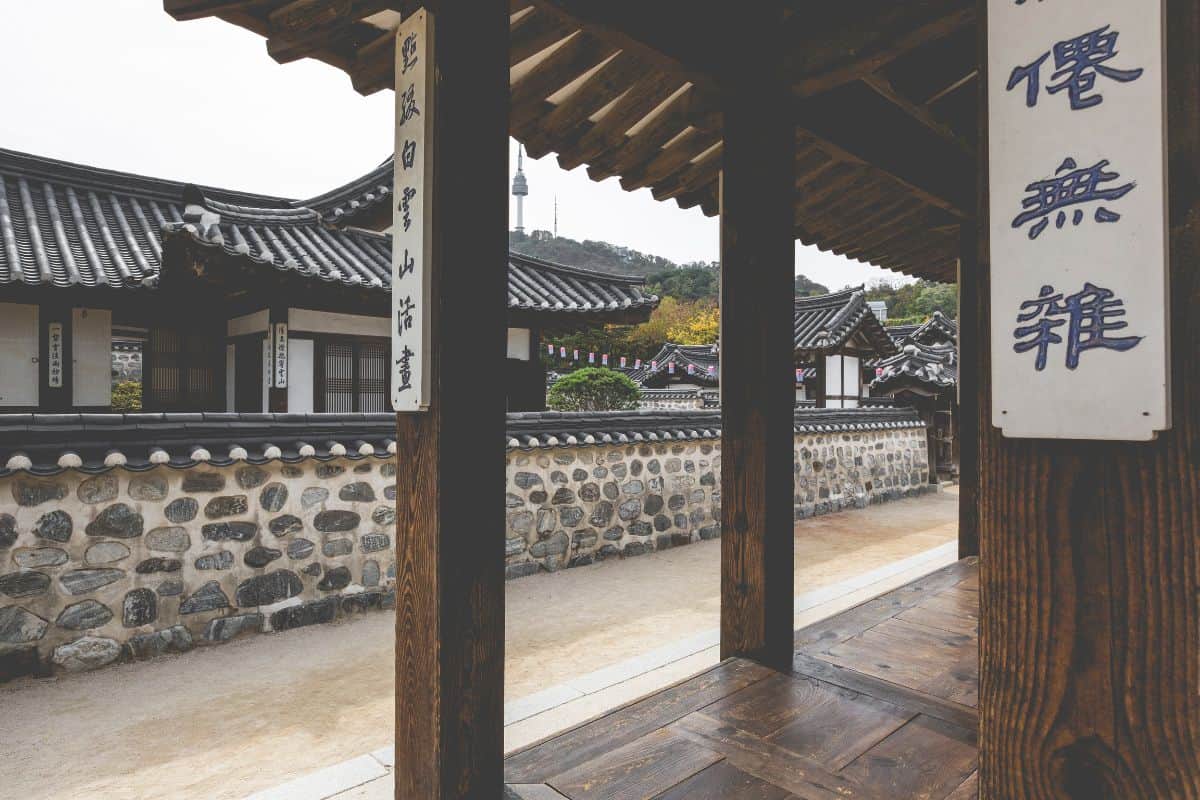
Namsan Hanok Village
Nestled at the base of Namsan Mountain, Namsangol Hanok Village is a charming recreation of traditional Korean life during the Joseon dynasty. The village opened in 1998 and features 5 restored hanoks (traditional Korean houses) once owned by aristocrats and government officials.
The meticulously reconstructed homes reflect their previous owners' social status and lifestyles. Visitors can wander through the village’s traditional gardens, participate in cultural programs such as hanbok-wearing, and witness fascinating taekwondo demonstrations.
September is an excellent time to explore Namsan Hanok Village, as the cool autumn air enhances the peaceful ambiance. The changing leaves add a splash of color to the village, making it a serene escape from the city's fast-paced environment.
For tourists looking to experience Korea's cultural traditions, from tea ceremonies to hanji folding, this village is a must-visit.
National Museum of Korea
The National Museum of Korea is the country’s largest museum, showcasing over 420,000 artifacts from ancient history to modern culture. The museum's impressive collection covers art, history, and culture, giving visitors a comprehensive understanding of Korea’s heritage.
In addition to its permanent galleries, the museum hosts special exhibitions, cultural events, and concerts, offering a lively mix of activities. Families and children can also explore the interactive Children’s Museum, making it an enjoyable and educational experience for visitors of all ages.
September is a pleasant time to explore the museum’s outdoor grounds, dotted with pagodas and stone sculptures too large to display indoors. The cooler weather is perfect for walking around the museum’s gardens, while the museum’s wide variety of exhibits offers tourists a rich cultural experience.
Insadong Cultural Street
Insadong Cultural Street is one of Seoul's most vibrant and artistic neighborhoods, famed for its galleries, traditional Korean restaurants, teahouses, and street vendors. The area stands out for its dedication to preserving Korea's cultural heritage, with many storefronts using hangeul, the Korean script, in their signs.
The street's lively atmosphere attracts both locals and tourists who come to explore its many treasures, from traditional crafts to modern art. Street performers and buskers frequently entertain visitors, making the street lively and dynamic, especially on evenings and weekends.
September is a delightful time to visit Insadong, as the cool weather makes strolling the streets more enjoyable. The changing season adds a touch of warmth to the area's aesthetic, and tourists can fully appreciate the outdoor vendors without the summer heat.
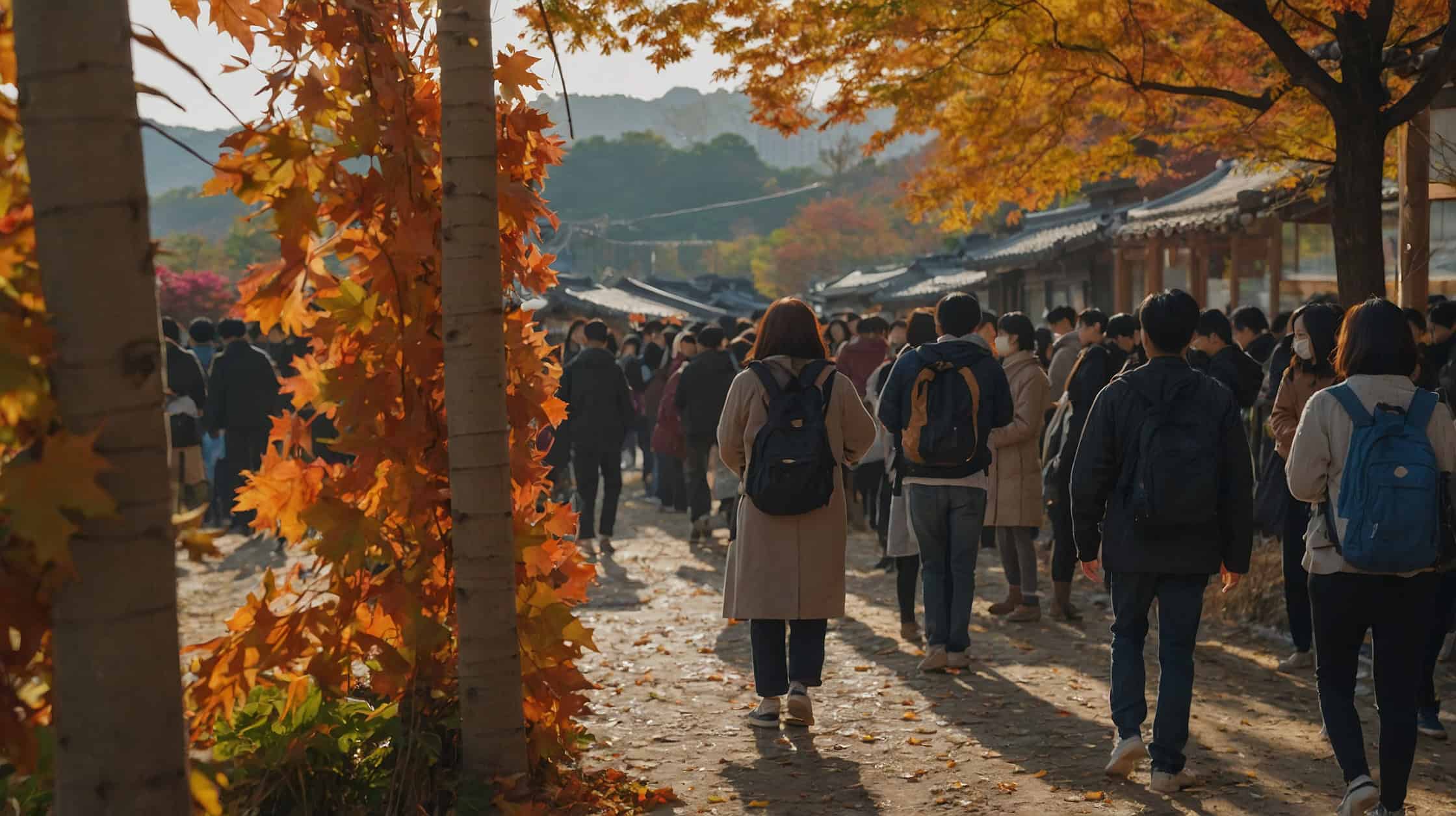
🎉 Korea Festivals in September
Great Baekje Festival
The Great Baekje Festival, first held in 1955, is a cultural celebration that brings the ancient history and traditions of the Baekje era to life.
Taking place at UNESCO World Heritage sites in Gongju and Buyeo, areas that were once the heart of the Baekje Kingdom (18 BC – 660 AD), this festival offers a deep dive into the art, culture, and history of one of Korea’s most influential dynasties.
From historical reenactments to cultural performances, visitors are treated to an immersive experience that highlights the glory of the Baekje period.
As one of South Korea's oldest cultural festivals, the Great Baekje Festival allows visitors to witness royal processions, Baekje martial arts demonstrations, and other traditional events that showcase the daily life and royal rituals of the kingdom.
The festival, held at locations like Gongju and Buyeo, transforms these historical cities into living museums filled with vibrant exhibitions.
Suwon Hwaseong Media Art Festival
The Suwon Hwaseong Media Art Festival is an extraordinary event that combines cutting-edge technology with Korea’s rich traditional heritage. It’s held annually at the UNESCO World Heritage site, Suwon Hwaseong Fortress.
Visitors can expect to be dazzled by media art installations that turn the fortress walls into a mesmerizing display of light and creativity. In addition, the festival features the Suwon Lantern Festival, where colorful lanterns illuminate the fortress grounds, along with traditional performances, guard ceremonies, and hands-on cultural programs for all ages.
One of the key highlights is the Citizen’s Parade, a grand procession that brings together the local community to celebrate Suwon’s cultural heritage. Paired with the Suwon Food Culture Festival and other events, this festival offers a rich and immersive experience for locals and tourists.
Andong Mask Dance Festival
The Andong Mask Dance Festival, held in Andong, home to the UNESCO-designated Andong Hahoe Village, is a vibrant celebration of Korea's traditional mask dance drama.
This annual festival is known for showcasing Korea’s talchum, a mask dance that humorously reflects social issues through exaggerated expressions and storytelling. In addition to these Korean performances, mask dancers from around the globe also participate, creating a culturally diverse experience for visitors.
More than just a series of performances, the festival invites attendees to participate in interactive workshops, where they can create their masks, learn traditional dance steps, and delve deeper into the cultural significance of the art form.
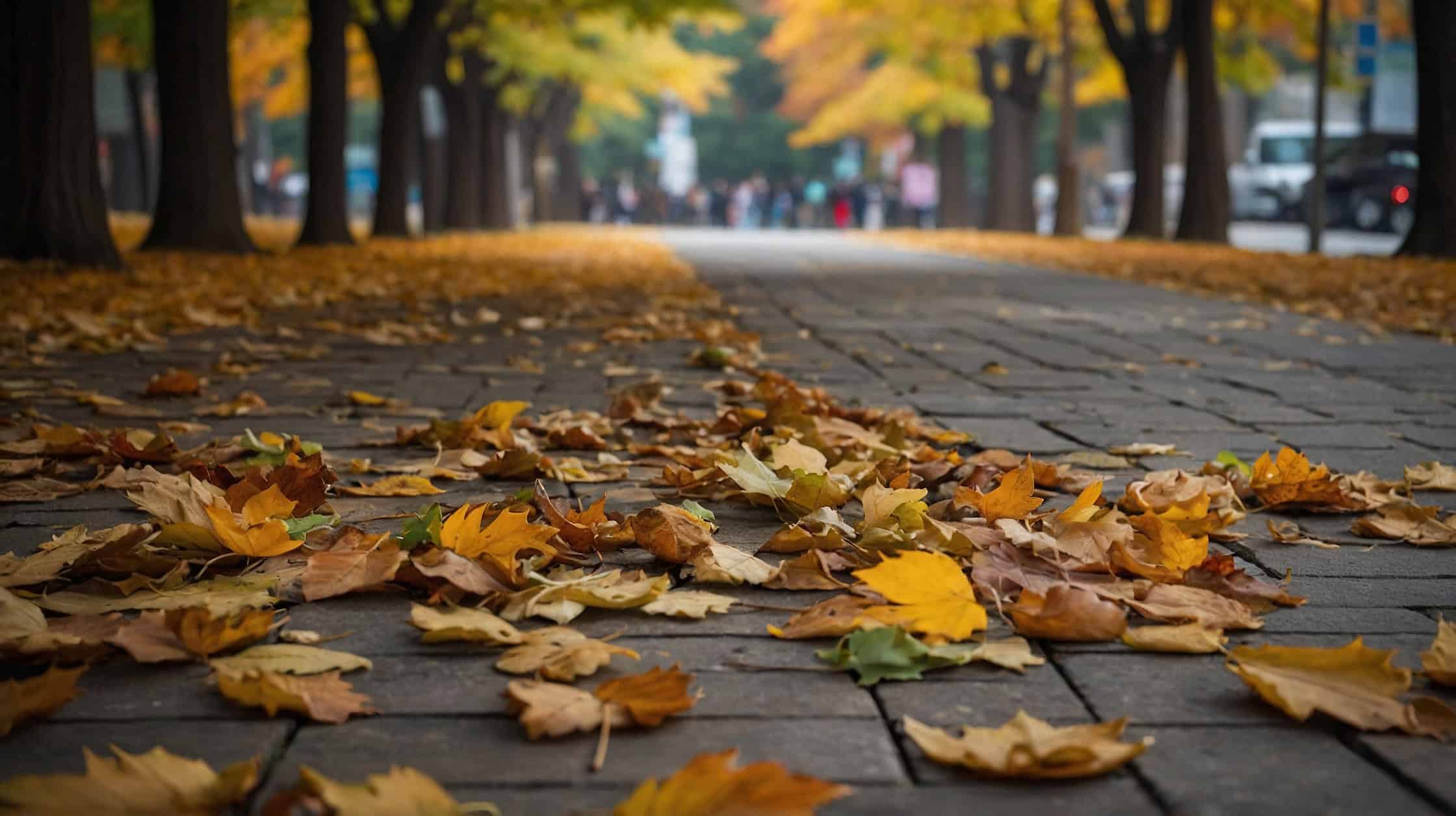
❤️ Korean Public Holidays in September
Chuseok
Chuseok, or Korean Thanksgiving, is a major holiday in Korea. Families gather to enjoy meals, tell stories, and honor their ancestors. Celebrating the fall harvest, the holiday highlights Korean culture and family bonds.
In 2024, Chuseok was on September 17, with festivities from the 14th to the 18th. Dates can vary, like in 2025, when it's in early October.
For tourists, Chuseok is a great time to experience Korean traditions through performances, cultural events, and markets. Many locals head to their hometowns, making cities less crowded and attractions more accessible for visitors.

🍐 Korean Foods to Try in September
Jeon
Jeon, known as Korean pancake, is a key autumn dish in Korea, perfect for rainy days. The sound of jeon frying is like raindrops falling. In September, travelers in Korea can find jeon at market stalls and in restaurants that specialize in different types. Popular ones include:
- Haemul-jeon: seafood pancake with local flavors.
- Kimchi-jeon: spicy pancake with kimchi.
- Pa-jeon: pancake with whole scallions.
- Kamja-jeon: simple potato pancake, crispy and thick.

Songpyeon
During Chuseok, one of the most anticipated treats is songpyeon, a delicacy that embodies the spirit of this festive occasion. These half-moon-shaped rice cakes carry deep cultural significance and are traditionally prepared as a dessert to share with family and honor ancestors.
The unique flavor of songpyeon comes from being steamed over a bed of pine needles, adding a subtle aromatic essence that complements their slightly sweet fillings.
Travelers visiting Korea during Chuseok can easily find songpyeon at traditional markets across the country, where a diverse array of these rice cakes is available. Some of the popular variations include those filled with red bean paste, toasted sesame seeds, or chestnuts.
Even for those who do not partake of personal songpyeon-making experiences, sampling these exquisite treats offers a taste of Korea's rich culinary traditions and a glimpse into the celebration of gratitude and family inherent in Chuseok festivities.
Grilled Jeoneo
Grilled jeoneo is unique in Korean culinary traditions, particularly during autumn, when this fish, also known as gizzard shad, is most abundant. Its name, "money fish," reflects its high value and desirability in Korean culture.
The preparation of this dish offers 2 popular choices: raw or grilled. When grilled, the aroma is known to be so alluring that a Korean proverb humorously suggests even a runaway daughter-in-law would be enticed to return home at the scent of grilled jeoneo.
For those visiting Korea in the fall, trying grilled jeoneo is a must. This unique dish is not just about its savory fragrance but also its delectable taste, surpassing its enticing aroma. The fish features soft, chewable bones, making eating easy and delightful.
Adventurous travelers can find this seasonal delicacy at many local markets and restaurants, where they will be treated to a culinary tradition deeply embedded in the rich tapestry of Korean cuisine.
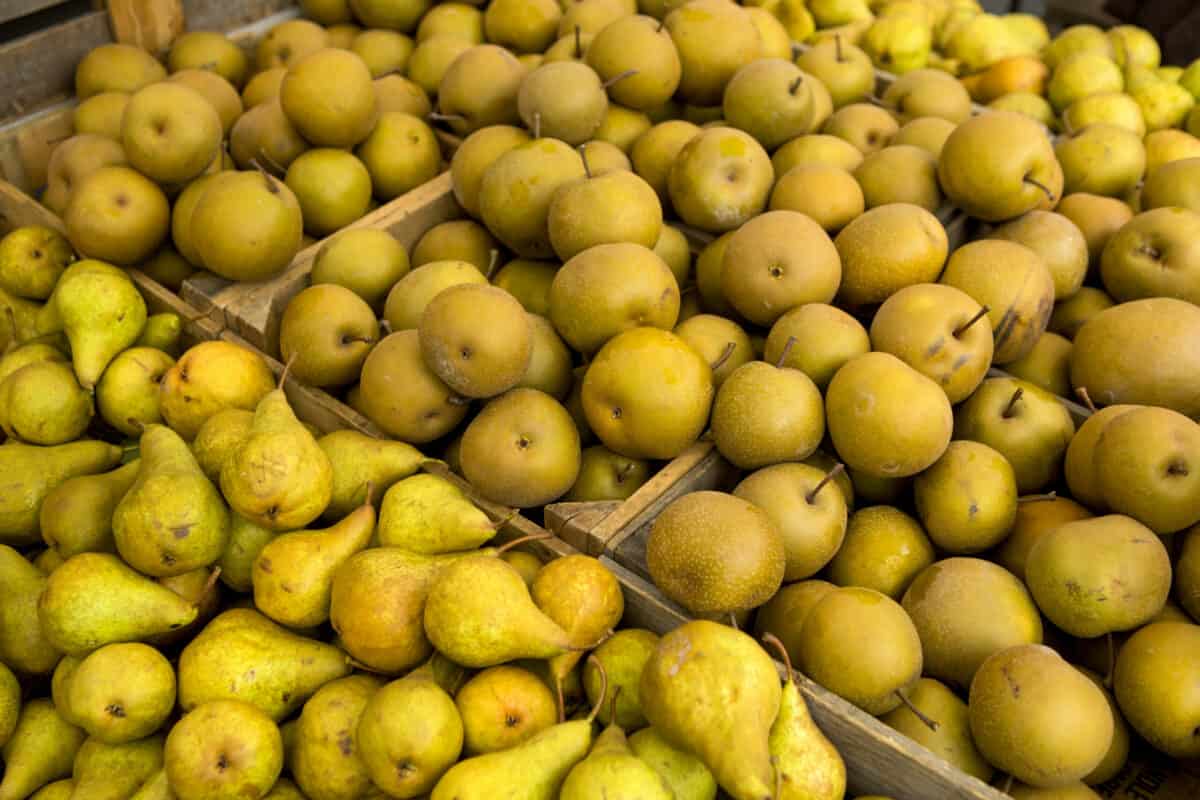
Korean Pears
Korean pears emerge as a cherished delicacy during the autumn season, captivating travelers with their sweet, apple-like flavor and impressive size.
These pears, often enjoyed raw without their peel, provide a refreshing and crisp bite that complements Korea's culinary scene. Widely available during the harvest months, they become a staple ingredient in various foods and beverages.
In Korea, Korean pears hold special significance during Chuseok, the Korean harvest festival. As a symbol of abundance and prosperity, they are commonly presented in large, fancy boxes as thoughtful gifts among family and friends.
Before the celebrations, supermarkets and specialty stores display beautifully packaged gift sets, inviting visitors to partake in this cherished tradition.
Braised Galchi
Braised galchi, or braised cutlass fish, is a staple in Korean cuisine, particularly renowned for its rich flavors and tender texture. This dish stands out with its transformative cooking method, where the fatty fish is simmered to perfect tenderness alongside essential ingredients like radish, onions, and gochujaru or red chili pepper powder.
Grilled galchi is also popular, but the braised version remains a trademark Korean delicacy. During the cooking process, the cutlass fish absorbs the aromatic combination of spices, capturing the essence of autumn in each bite.
For travelers venturing to Jeju Island, sampling braised galchi is a culinary experience not to be missed. This local specialty is particularly famous on the island, with its unique preparation celebrating the seasonal bounty. The dish offers a beautiful harmony of flavors that paints a vivid picture of Korea's autumnal landscape.
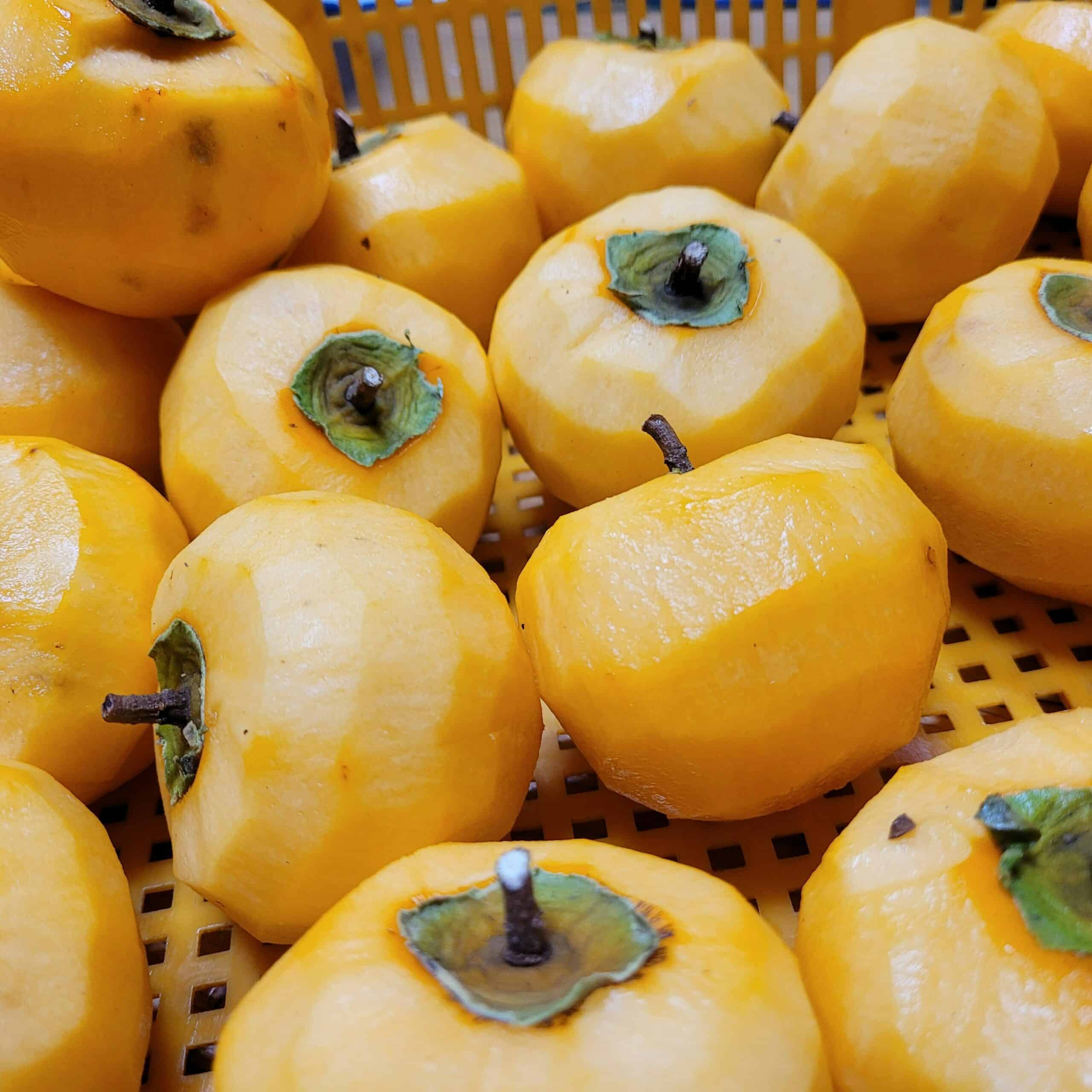
Gotgam
Gotgam, or dried persimmon, is a classic Korean dessert, especially popular in autumn for its sweet taste. Made by drying ripe persimmons harvested in the fall, gotgam's sugars are concentrated, giving it a unique flavor and aroma.
Its bright orange color complements Korean autumn landscapes' stunning reds and oranges. Travelers in Korea during this season will find gotgam as vibrant as the scenery around them, though if you have the chance, fresh Korean persimmon is also a delicious delicacy.
📝 Korea Itinerary for September
Day 1
Begin your trip by immersing yourself in Korea’s royal history with a morning visit to Changdeokgung, a palace and UNESCO World Heritage site. As you explore the palace and its serene Secret Garden, the early signs of autumn will enhance the experience with its beautiful colors.
Afterward, head to Namsangol Hanok Village for lunch and an afternoon of cultural discovery. This traditional village offers a glimpse into Korea’s past with restored hanoks, where you can participate in activities like tea ceremonies and enjoy the tranquil environment.
In the evening, stroll through Insadong Cultural Street, a lively area filled with art galleries, traditional tea houses, and shops selling authentic Korean crafts.

Day 2
Start your second day with a visit to the National Museum of Korea, the largest museum in the country. Take your time exploring the permanent exhibits and enjoy the outdoor gardens, perfect for a peaceful morning walk.
After lunch, go to Songdo Central Park, a modern marvel where nature meets the city. Enjoy a relaxing boat ride through the park’s seawater canals, or simply walk along the paths, taking in the park's mix of futuristic architecture and natural beauty.
In the evening, go catch a showing of NANTA, a musical performance that's one of the longest-running in the country, and head to an all-you-can-eat Korean BBQ restaurant for dinner.
Day 3
Spend the morning exploring Gyeongbokgung, one of Korea’s most iconic royal palaces. Wander through its grand courtyards and catch the Changing of the Guard ceremony for an authentic glimpse into Korea’s regal past.
After a leisurely lunch, head to Bukchon Hanok Village, a picturesque neighborhood where traditional hanok houses blend with modern art galleries and cafes. The narrow alleys provide the perfect setting for an afternoon stroll while taking in the charm of old Seoul.
If it's a warm evening, go grab a bingsu from SulBing, one of the country's bingsu cafe chains, before a delicious dinner at a nearby traditional Korean restaurant.
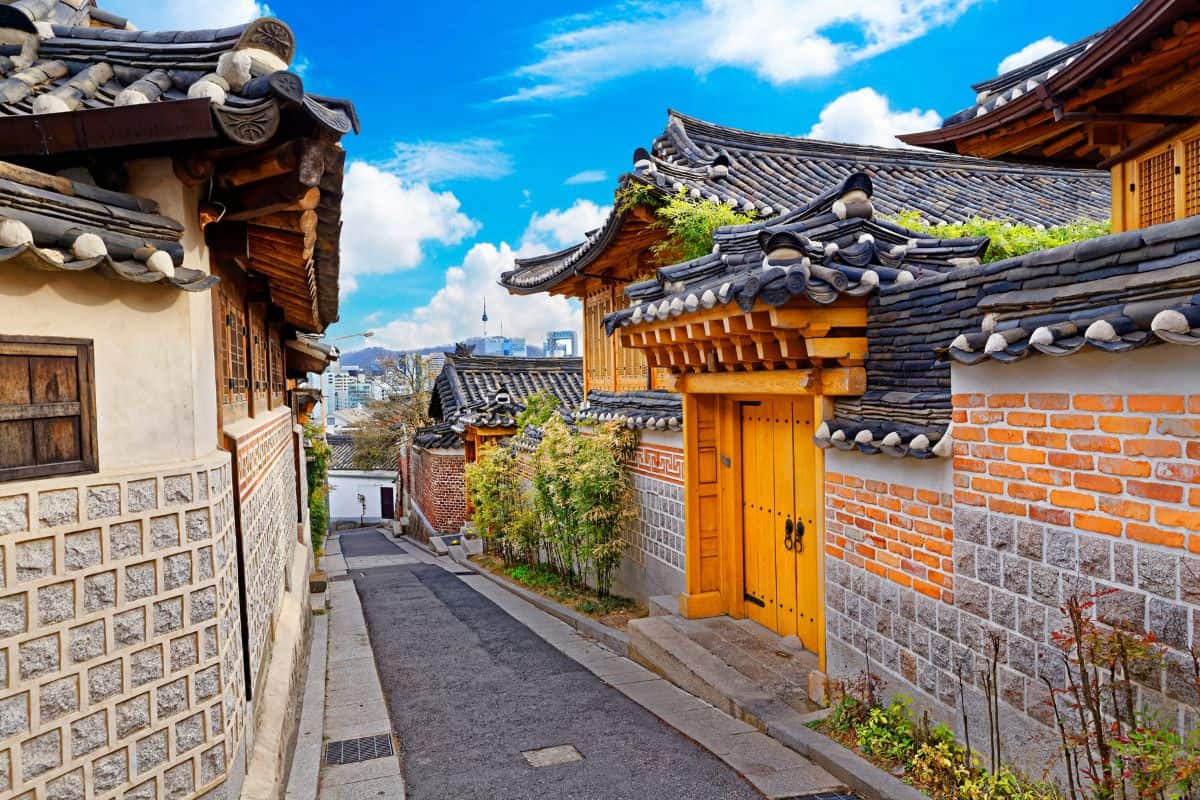
Day 4
In the morning, visit Dongdaemun Design Plaza (DDP), a striking example of futuristic architecture in the heart of Seoul. Spend time exploring its design-focused exhibitions, which showcase Korea’s modern artistic spirit.
For a refreshing break, head to Cheonggyecheon Stream in the afternoon. This peaceful urban waterway offers a relaxing place to walk and enjoy the cool breeze, with plenty of nearby cafes to stop for a drink.
If you have the energy to continue, this is the perfect evening on which to head to Myeongdong or Gwangjang Market for a dinner of Korean street food or even a full food tour around one of the historic night markets.
Day 5
On your final day, venture into nature with a morning visit to Bukhansan National Park. The early autumn weather makes it the perfect time for a leisurely hike or a gentle walk, surrounded by the park's lush landscape.
Afterward, head to Namsan Seoul Tower, where you can take in panoramic views of the city. As you walk around Namsan Mountain, the crisp September air will offer a refreshing end to your trip, as well as being near an array of traditional Korean and international restaurant options.
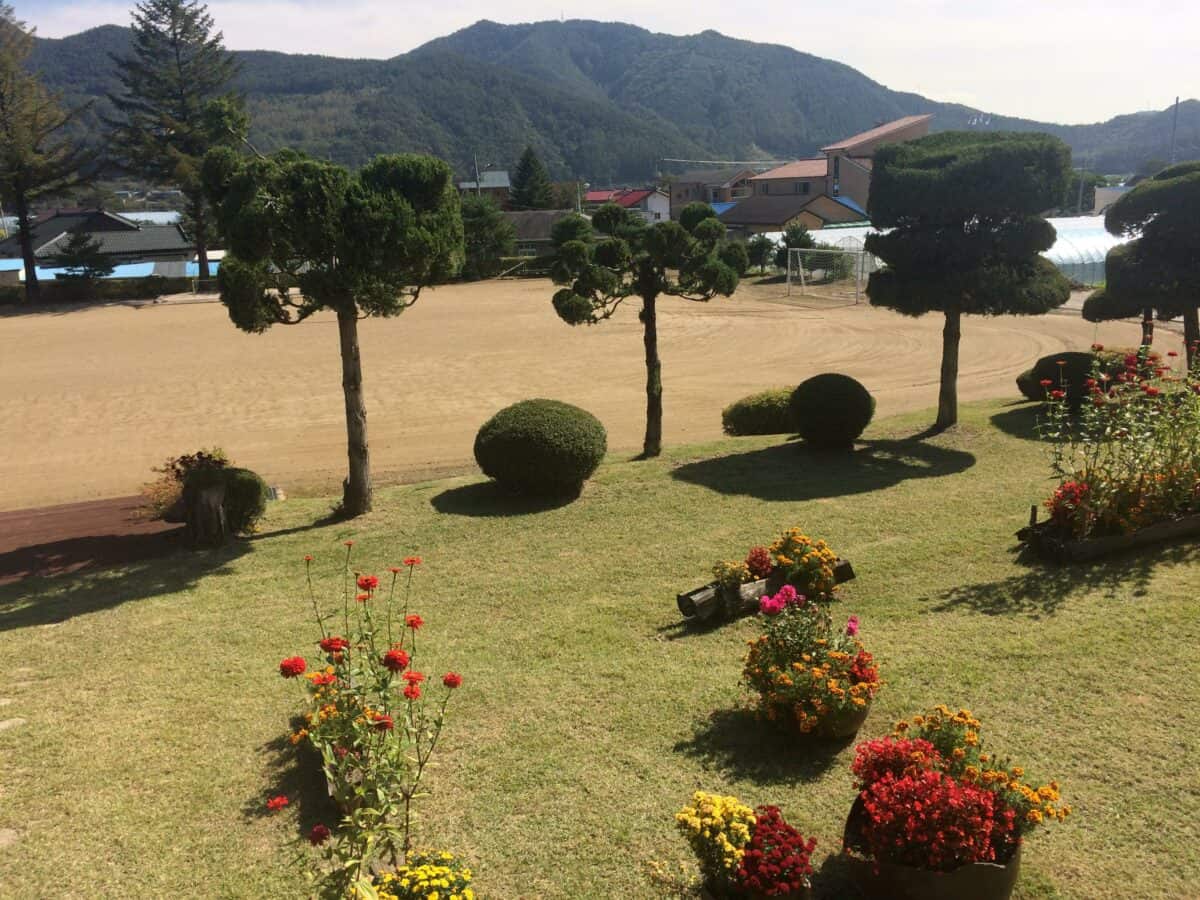
🎫 Korea Exclusive Tours for Autumn
Wondae-ri Birch Forest & Seasonal Flower Festival 1-Day Tour
This exclusive 1-day fall tour takes you to the breathtaking Wondae-ri Birch Forest, combined with a visit to the vibrant Seasonal Flower Festival. Available every Wednesday and Friday from September 13 to November 15, this tour offers a perfect opportunity to enjoy Korea’s autumn scenery.
With a duration of 11 hours, this tour is designed to provide a full day of nature and cultural experiences, great to book even as a solo traveler. Known as the filming location for the K-drama 'The Beauty Inside" and home to over 700,000 birch trees, this forest is a nature sanctuary and a showcase for the country's autumnal beauty.
The tour is in English and Chinese, making it accessible to a wide audience, and takes you to places inaccessible by public transportation. You'll meet at one of 3 convenient locations: Hongik University Station, Myeongdong Shinsegae Duty-Free (near Myeongdong Station Exit 5), or Dongdaemun H&C Park Station.
❓ Frequently Asked Questions
Absolutely! September is considered one of the best months to visit South Korea, as the weather is mild and comfortable. The autumn foliage changes colors in mid-October, making September the perfect time to catch glimpses of red and golden leaves without the chill of full autumn.
Generally, the temperature in Korea during September ranges from 70°-86°F (22-30°C), which is comfortable for outdoor activities even if you're hitting the tail end of summer. However, it’s ideal to bring a light jacket or sweater in case of cooler evenings, especially if you'll be based in Seoul.
It's a great time to visit Busan in September - the city experiences cooler temperatures during this time, making it easier to explore and enjoy outdoor activities. Plus, it's also the start of film festival festivities, and the autumn foliage in Busan is stunning.

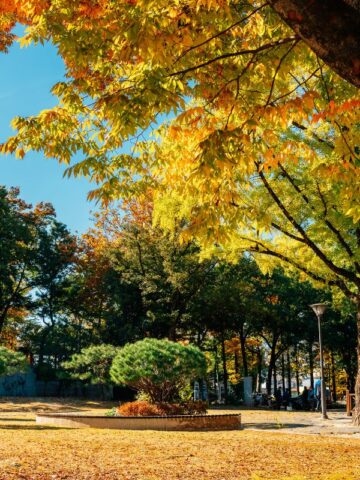
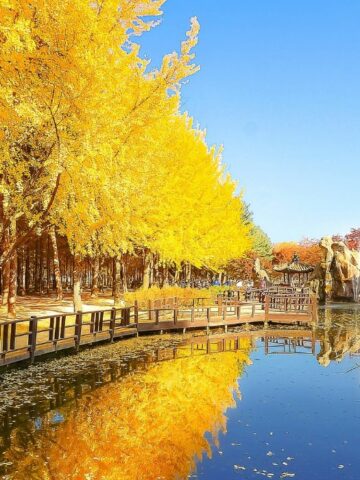
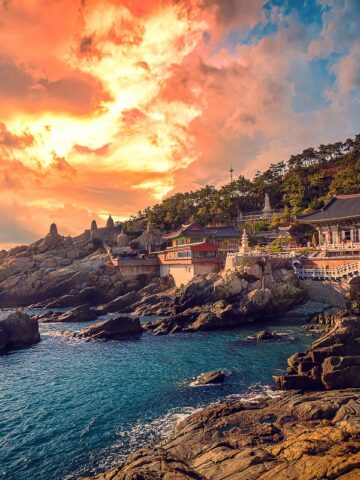
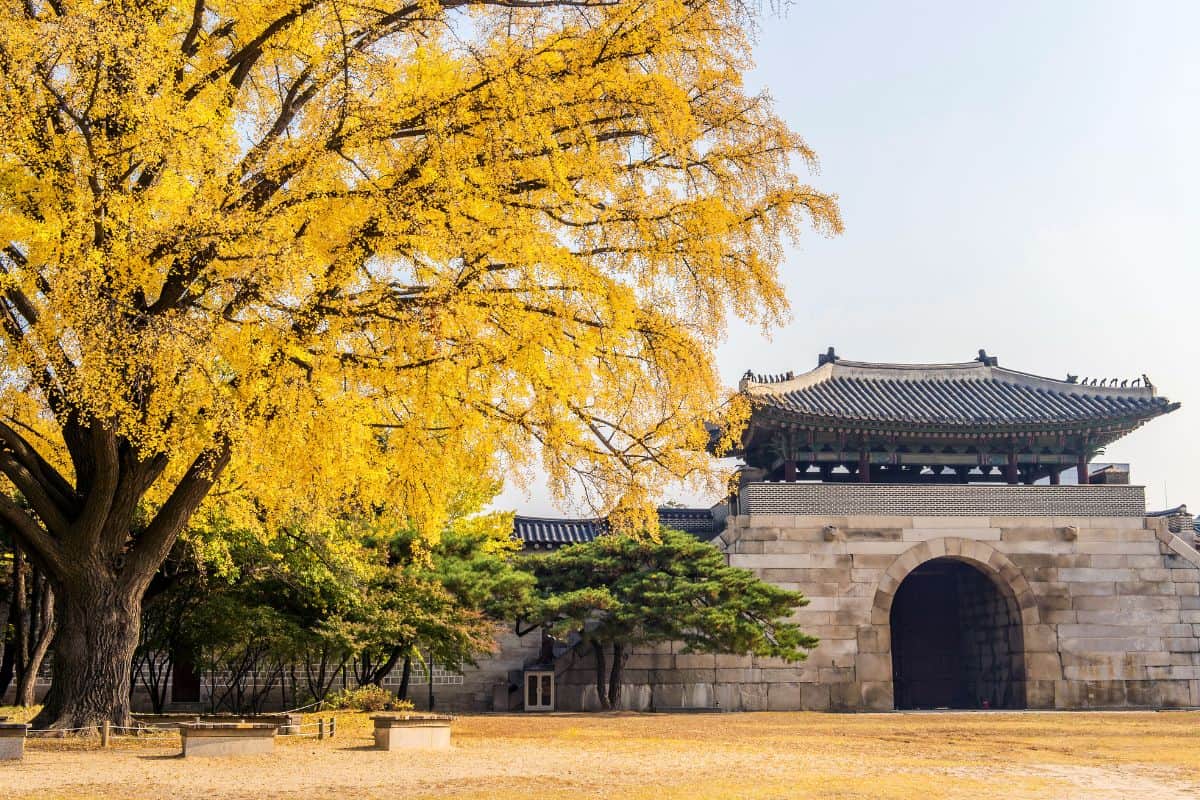
Comments
No Comments